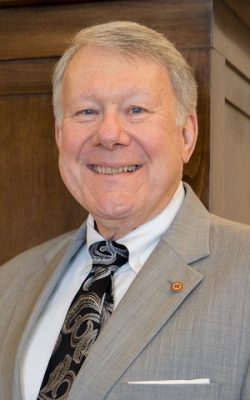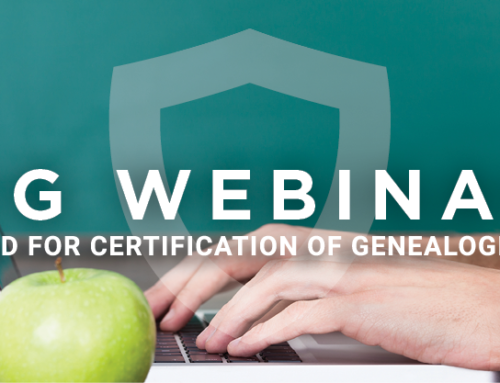“The Advance of Research Habits over Recent Decades—And the Downside”
Presented by Thomas W. Jones, CG®, CG®, PhD, FASG, FUGA, FNGS
Reviewed by Jean Andrews, CG®
NOTE: This post highlights the BCG Education Fund’s Helen F.M. Leary Distinguished Lecture Series presented at the National Genealogical Society’s 2019 Family History Conference held in St. Charles, Missouri from 08-11 May, 2019. Recordings of this lecture and the accompanying session handout can be purchased from PlaybackNow NGS at https://www.playbackngs.com/
 By turns light-hearted and sobering, Dr. Jones covers the landscape and undeniable advances in ways that genealogists research. Well-equipped for this, he has witnessed firsthand the past 40 years of evolution, and made countless contributions to its progress.
By turns light-hearted and sobering, Dr. Jones covers the landscape and undeniable advances in ways that genealogists research. Well-equipped for this, he has witnessed firsthand the past 40 years of evolution, and made countless contributions to its progress.
Comparing the research habits of 40 years ago with those of today, the “sea changes” that occurred are:
• Personal computers
• Internet availability
• Genealogical software
Prior to the advent of computers and the internet, research occurred in a print environment. Queries circulated in magazines, local publications purchased, and letters written to relatives and governmental offices. Many of us have seen letters, for example, in pension files from descendants seeking information.
Books and libraries formed another source of information. Published family histories, a few methodology books, and society journals might be found. Visits to courthouses, cemeteries, and local libraries were made. Response rates to queries was high as identity and privacy concerns were almost unknown.
Because researchers were forced to consult mainly textual records, they had to examine them in context and figure out what to do next. Researchers of the period knew genealogy was difficult and time consuming, so they prepared accordingly.
This era also had its problems. Sources were not critically examined. Many are familiar with the error–riddled published pedigrees of early 20th century authors, analogous to the present era’s error–riddled online family trees.
The rate of gathering information has accelerated, sometimes at the cost of evaluating and analyzing. We now have vast amounts of information available to us in digitized records, DNA testing, and educational opportunities. Of all the tools today, DNA is the only one that did not exist for prior generations of researchers. Ongoing and evolving, DNA represents an enormous change in the genealogical landscape.
Today’s world is a better place but there are flaws. Jones characterized the “Great Divide” between two groups that populate today’s genealogical landscape. One of the best definitions from the now inactive blog “Ancestry Insider” defined it as the group of people who know genealogical research is hard versus those who think it is easy.[1]
Finishing up with five suggestions for those researching in the online era, Jones includes keeping track of sources, concern for accuracy, responding to others, publishing ethically, and having a goal of understanding your ancestors.
As Dick Eastman notes, “The basics of good genealogy research haven’t changed in the past century, even though we certainly have more convenient access today than ever.”[2]
The words Certified Genealogist and letters CG are registered certification marks, and the designations CGL and Certified Genealogical Lecturer are service marks of the Board for Certification of Genealogists®, used under license by board certificants after periodic evaluation.
[1] “Genealogist–ologist–ologist,” 27 October 2010, Ancestry Insider (www.ancestryinsider.org : viewed 06 September 2019). Search for post title.
[2] Dick Eastman, “Are You Recording Fairy Tales in Your Genealogy Records?,” 6 February 2019, at Eastman’s Online Genealogy Newsletter (www.blog.eogn.com : viewed 06 September 2019), para. 10.


